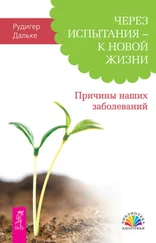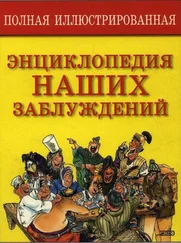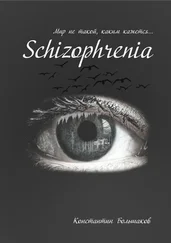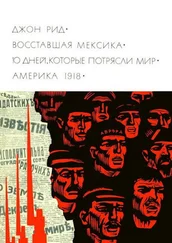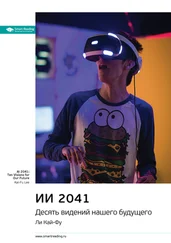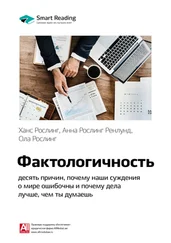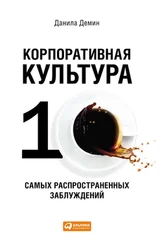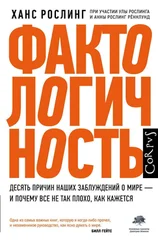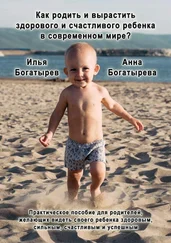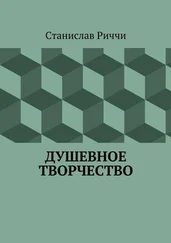Rosling H. «The magic washing machine». Filmed December 2010 in Washington, DC. TEDWomen video, 9:15. https://www.ted.com/talks/hans_rosling_and_the_magic_washing_machine.gapm.io/tedrosWa.
Rosling H., Hofvander Y., Lithell U.-B. «Children’s death and population growth» // Lancet . 1992. No. 339 (February 8). P. 377–378.
Royal Society of London. Philosophical transactions of the Royal Society of London. 155 vols. London, 1665–1865. gapm.io/xroys1665.
Sarkees M. R., Wayman F. Resort to War: 1816–2007. Washington DC: CQ Press, 2010. gapm.io/xcow17.
SCB. System of Environmental and Economic Accounts. gapm.io/xscb2.
Schultz T. P. «Why Governments Should Invest More to Educate Girls» // World Development . 2002. Vol. 30. No. 2. P. 207–225.
SDL. «Slavery in Domestic Legislation», a database by Jean Allain and Dr. Marie Lynch at Queen’s University Belfast. http://www.qub.ac.uk/.
Senge P. M. The Fifth Discipline: The Art & Practice of the Learning Organization . New York: Doubleday, 1990.
Shengmin Y. et al. «Study on the Concept of Per Capita Cumulative Emissions and Allocation Options» // Advances in Climate Change Research . 2011. No. 2 (June 25). P. 79–85. gapm.io/xcli11.
SIPRI Trends in world nuclear forces, 2017. Kile S. N., Kristensen H. M. SIPRI, July 2017. gapm.io/xsipri17.
Smil V. Energy Transitions: Global and National Perspectives. 2nd ed. Santa Barbara, CA: Praeger, 2016. gapm.io/xsmilen.
Smil V. Global Catastrophes and Trends: The Next Fifty Years. Cambridge: MIT Press, 2008. gapm.io/xsmilcat.
Spotify. Web API. https://developer.spotify.com/web-api.
Stockholm Declaration. Fifth Global Meeting of the International Dialogue on Peacebuilding and Statebuilding, 2015. https://www.pbsbdialogue.org/en.
Sundberg R., Melander E. «Introducing the UCDP Georeferenced Event Dataset» // Journal of Peace Research . Vol. 50. No. 4. P. 523–532.
Sundin J., Hogstedt C., Lindberg J., Moberg H. Svenska folkets hälsa i historiskt perspektiv. Barnhälsans historia. Solna: Statens folkhälsoinstitut, 2005. P. 122. gapm.io/xsfhi5.
Tanigawa K. et al. «Loss of life after evacuation: lessons learned from the Fukushima accident» // Lancet . 2012. Vol. 379. No. 9819 (March 10). P. 889–891. gapm.io/xfuk.
Tavris C., Aronson E. Mistakes Were Made (But Not by Me): Why We Justify Foolish Beliefs, Bad Decisions, and Hurtful Acts. New York: Harcourt, 2007.
Tetlock P. E., Gardner D. Superforecasting: The Art and Science of Prediction . New York: Crown, 2015.
The Economist [1]. «The tragedy of the high seas» // Economist. 2014. February 22. gapm.io/xeconsea.
The Economist [2]. «Democracy Index from the Economist Intelligence Unit». Accessed December 2, 2017. gapm.io/xecodemi.
Tylleskär T. «KONZO — the walk of the chameleon». Video, a group work in global nutrition, featuring Dr. Jean-Pierre Banea-Mayambu (head of Pronanut), Dr. Desire Tshala-Katumbay (from the neurology clinic at Centre Neuropsychopathologique, CNPP, Kinshasa), and students in nutrition at Uppsala University, Sweden, 1995. gapm.io /xvkonzo.
UCDP[1] (Uppsala Conflict Data Program). Battle-Related Deaths Dataset, 1989 to 2016, dyadic, version 17.1. See Allansson et al., dyadic, version 17.1. http://ucdp.uu.se/downloads.
UCDP[2]. Uppsala Conflict Data Program, Georeferenced Event Dataset (GED) Global version 17.1 (2016). См.: Sundberg et al (2013). Department of Peace and Conflict Research, Uppsala University. http://ucdp.uu.se/downloads.
UN Comtrade. https://comtrade.un.org/.
UN Statistic Division. «Developing regions». Accessed December 20, 2017. gapm.io/xunsdef.
UN-IGME (United Nations Interagency Group for Child Mortality Estimation). «Child Mortality Estimates». Last modified October 19, 2017. http://www.childmortality.org.
UN-Pop[1] (UN Population Division). Population, medium fertility variant. World Population Prospects 2017. United Nations, Department of Economic and Social Affairs, Population Division. https://esa.un.org/unpd/wpp.
UN-Pop[2]. Annual age composition of world population, medium fertility variant. World Population Prospects 2017. UN Population Division. https://esa.un.org/unpd/wpp.
UN-Pop[3]. Indicators: Life expectancy and total fertility rate (medium fertility variant). World Population Prospects 2017. UN Population Division. Accessed September 2, 2017. https://esa.un.org/unpd/wpp.
UN-Pop[4]. Annual population by age — Female, medium fertility variant. World Population Prospects 2017. UN Population Division. Accessed November 7, 2017. gapm.io/xpopage.
UN-Pop[5]. World Population Probabilistic Projections. Accessed November 29, 2017. gapm.io/xpopproj.
UN-Pop[6]. «The impact of population momentum on future population growth» // Population Facts . No. 2017/4 (October, 2017). P. 1–2. gapm.io/xpopfut.
UN-Pop[7]. Andreev K., Kantorová V, Bongaarts J. «Demographic components of future population growth». Technical paper no. 2013/3. United Nations DESA Population Division, 2013. gapm.io/xpopfut2.
UN-Pop[8]. Deaths (both sexes combined), medium fertility variant. World Population Prospects 2017. UN Population Division. Accessed December 2, 2017. gapm.io/xpopdeath.
UN-Pop[9]. World Contraceptive Use 2017. World Population Prospects 2017. UN Population Division, March 2017. Accessed December 2, 2017. gapm.io/xcontr.
UNAIDS. «AIDSinfo». Accessed October 4, 2017. http://aidsinfo.unaids.org.
UNDESA (United Nations Department of Economic and Social Affairs). «Electricity and education: The benefits, barriers, and recommendations for achieving the electrification of primary and secondary schools». December 2014. gapm.io/xdessel.
UNEP[1] (United Nations Environment Programme). Towards a Pollution-Free Planet. Nairobi: United Nations Environment Programme, 2017. gapm.io/xpolfr17.
UNEP[2]. Regional Lead Matrix documents published between 1990 and 2012. gapm.io/xuneplmats.
UNEP[3]. «Leaded Petrol Phase-out: Global Status as at March 2017». Accessed November 29, 2017. gapm.io/xunepppo.
UNEP[4]. Ozone data access center: ODS consumption in ODP tonnes. Data updated November 13, 2017. Accessed November 24, 2017. gapm.io/xods17.
UNEP[5]. The World Database on Protected Areas (WDPA). UNEP, IUCN, and UNEP-WCMC. https://protectedplanet.net.
UNEP[6]. Protected Planet Report 2016. UNEP-WCMC and IUCN, Cambridge, UK, and Gland, Switzerland, 2016. Accessed December 17, 2017. gapm.io/xprotp16.
UNESCO[1] (United Nations Educational, Scientific and Cultural Organization). «Education: Completion rate for primary education (household survey data)». Accessed November 5, 2017. gapm.io/xcomplr.
UNESCO[2]. «Education: Literacy rate». Last modified July 2017. Accessed November 5, 2017. gapm.io/xuislit.
UNESCO[3]. «Education: Out-of-school rate for children of primary school age, female». Accessed November 26, 2017. gapm.io/xuisoutsf.
UNESCO[4]. «Rate of out-of-school children». Accessed November 29, 2017. gapm.io/xoos.
UNESCO[5]. «Reducing global poverty through universal primary and secondary education». June 2017. gapm.io/xprimsecpov.
UNFPA[1] (United Nations Population Fund). «Sexual & reproductive health». Last updated November 16, 2017. http://www.unfpa.org/sexual-reproductive-health.
UNHCR (United Nations High Commissioner for Refugees). «Convention and protocol relating to the status of refugees». UN Refugee Agency, Geneva. gapm.io/xunhcr.
UNICEF-MICS. Multiple Indicator Cluster Surveys. Funded by the United Nations Children’s Fund. Accessed November 29, 2017. http:// mics.unicef.org.
UNICEF[1]. The State of the World’s Children 1995 . Oxford, UK: Oxford University Press, 1995. gapm.io/xstchi.
Читать дальше
Конец ознакомительного отрывка
Купить книгу
![Анна Рослинг Рённлунд Фактологичность [Десять причин наших заблуждений о мире — и почему все не так плохо, как кажется] обложка книги](/books/393666/anna-rosling-rennlund-faktologichnost-desyat-prich-cover.webp)
